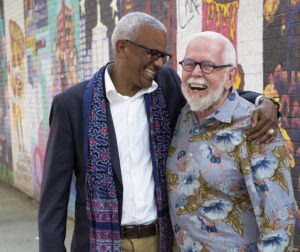Metonyms: What’s in name?
I have recently been doing a great deal of speaking and writing about the language of long-term care and have become convinced that to our collective detriment, we are immersed in a sea of negative metonyms.
Metonyms are words that provide understanding by having one part of a concept stand for all of it. An example is to characterize your residential care setting as a “120-bed facility,” even though it is comprised of much more than beds.
A famous metonymic exchange is reported to have taken place between the industrialist Henry Ford and his factory superintendent, who advised Ford that there was such demand for cars that he “would have to hire more hands.” Ford, who recognized a metonym when he heard one, was reported to have said: “I don’t mind hiring more hands; it’s the rest of them I don’t want.” When it comes to elders, there are classic metonyms in use that prime or stimulate certain response tendencies in us.
For example, when an elder does something, people can use the metonym tied to the personal story of who he/she is by using their name. A name is a metonym. But the person’s behavior can also be drawn from the social narrative (age, sex, race, social class, geography) so that their age or sex is the metonym used, as in “what do you expect at his age?” Finally, there is the illness narrative, where what the person has—the diagnostic label—is the metonym, so that it can be said “He’s a diabetic.”
The larger issue here is that most metonyms drawn from the social or illness narratives are deficit based. They define the person by what is wrong with them and thereby highlight how they are different from those of us who are the non-aged. Since what you call it is how you’ll treat it, elders run the risk of being engaged mostly around what is wrong when we have an intervention for it, not when their strengths are evident. Imaging being referred to by one of these metonyms: pooper, falling star, wanderer, screamer, feeder, eloper, wetter. Or would you rather your name be used?
These terms bump up against nursing home survey F-tag 241–Dignity. The language of that tag states: “The facility must promote care for residents in a manner and in an environment that maintains or enhances each resident’s dignity and respect in full recognition of his or her individuality.” Sounds like those metonyms would not fulfill the intent of F-tag 241. So remember what your mother said: “Watch your language!”
I Advance Senior Care is the industry-leading source for practical, in-depth, business-building, and resident care information for owners, executives, administrators, and directors of nursing at assisted living communities, skilled nursing facilities, post-acute facilities, and continuing care retirement communities. The I Advance Senior Care editorial team and industry experts provide market analysis, strategic direction, policy commentary, clinical best-practices, business management, and technology breakthroughs.
I Advance Senior Care is part of the Institute for the Advancement of Senior Care and published by Plain-English Health Care.
Related Articles
Topics: MDS/RAI , Staffing











